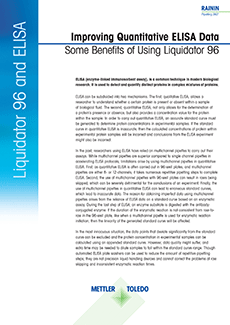Direct ELISA (antigen-coated plate; screening antibody)
In Direct ELISA, the process involves coating a microplate with the antigen and then adding the target antibody sample. The antibodies specific to the antigen bind to the coated surface, following which a secondary antibody labeled with an enzyme is added. The enzyme produces a signal that is proportional to the number of antigen-specific antibodies in the sample.
Direct ELISA is widely used as a screening test to detect specific antibodies in clinical and research settings. It is a simple and quick method to identify the presence or absence of the target antigen.
Indirect ELISA (antigen-coated plate; screening antigen/antibody)
Indirect ELISA is a widely used technique in research and clinical settings to detect and measure specific antibodies. The process involves coating a microplate with the antigen of interest, followed by the addition of a sample containing the target antibodies. The antibodies that bind specifically to the antigen are then detected using a secondary antibody labeled with an enzyme.
This secondary antibody is specific to the target antibody and produces a signal that allows for the detection and quantification of the target antibody in the sample. Indirect ELISA is highly sensitive and specific, and can detect multiple antibodies in a single sample. It is particularly useful as a screening tool for large populations in epidemiological studies.
Sandwich ELISA (antibody-coated plate; screening antigen)
In Sandwich ELISA, a microplate is utilized as a stable surface to which a capture antibody is coated that specifically binds to the antigen of interest. Then, the sample is added to the plate, and the antigen binds to the capture antibody. After washing away any unbound material, a detection antibody labeled with an enzyme is added, which binds to a different part of the antigen, forming a "sandwich" complex. The enzyme present on the detection antibody then generates a signal proportional to the amount of antigen bound to the plate, enabling the detection and quantification of the target antigen in the sample.
Sandwich ELISA is commonly used in research and clinical settings to detect and quantify the presence of specific antigens. It is highly sensitive and specific. The advantage of Sandwich ELISA is that it can detect multiple antigens in a single sample and can be used to detect different isoforms or forms of a protein in a complex sample.
Competitive ELISA (screening antibody)
In Competitive ELISA, the antigen of interest is attached to a microplate, and a labeled antigen is introduced into the sample. The labeled antigen competes with the antigen in the sample for binding to a limited number of specific antibodies. After washing away unbound material, the amount of labeled antigen bound to the antibodies is inversely proportional to the antigen concentration in the sample.
Competitive ELISA is a popular technique used in both research and clinical settings to detect and measure small molecules such as drugs, hormones, or metabolites with high sensitivity and specificity. One advantage of Competitive ELISA is that it doesn't require a capture or detection antibody, making it useful for detecting antigens that are not immunogenic or do not have specific antibodies available.












